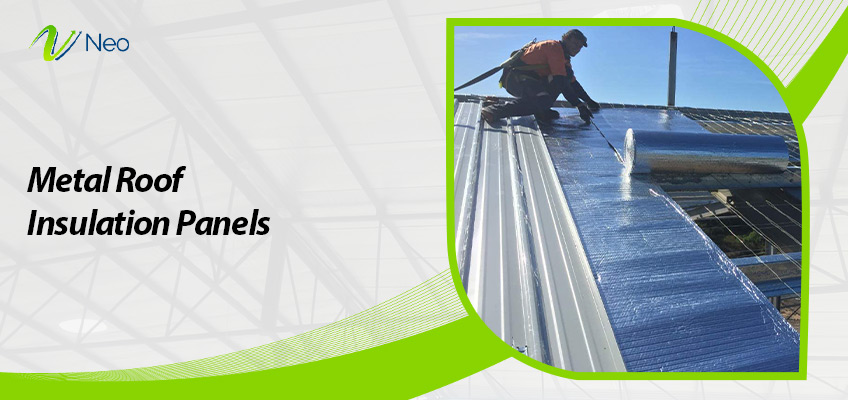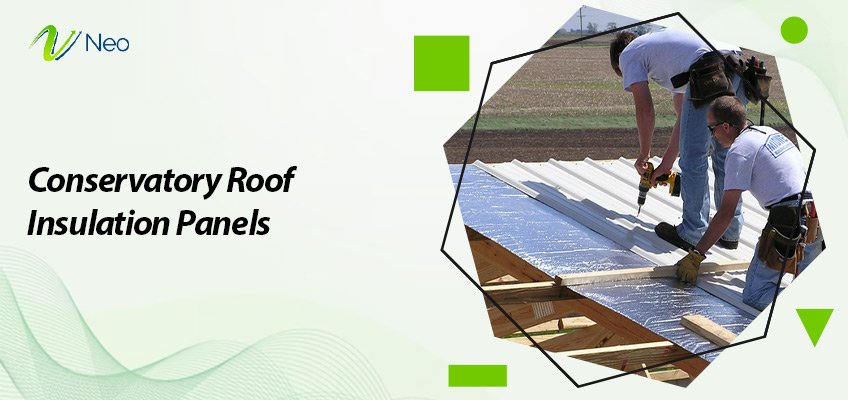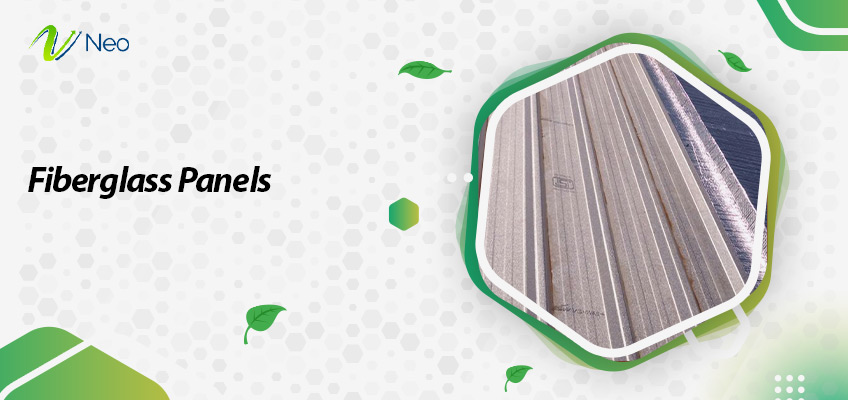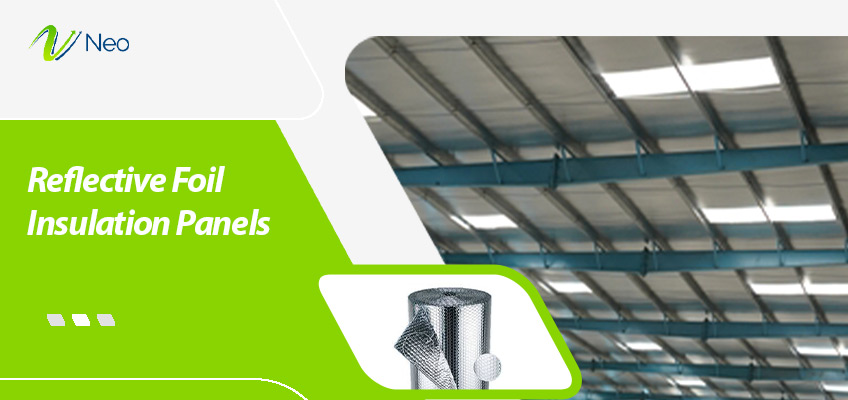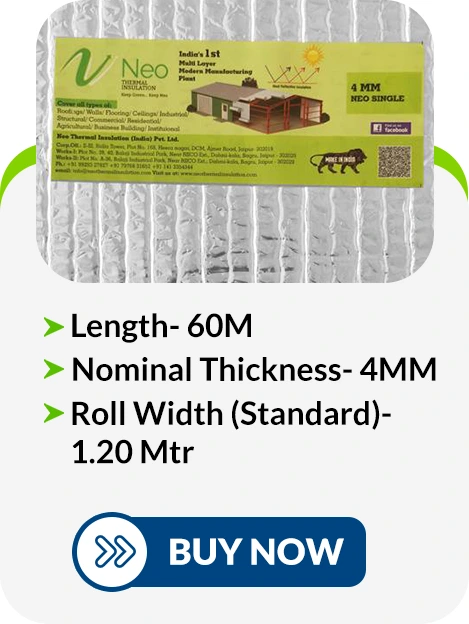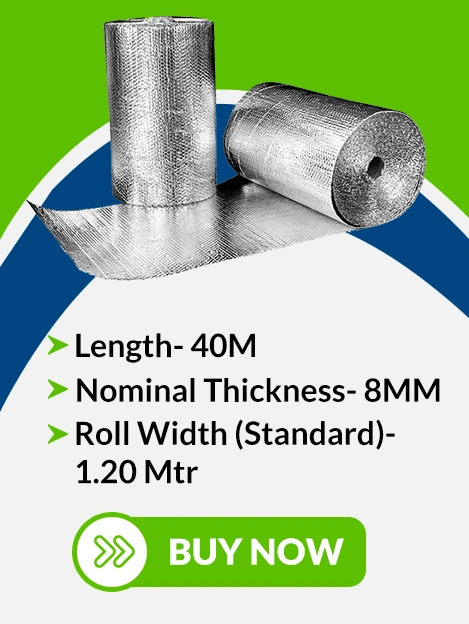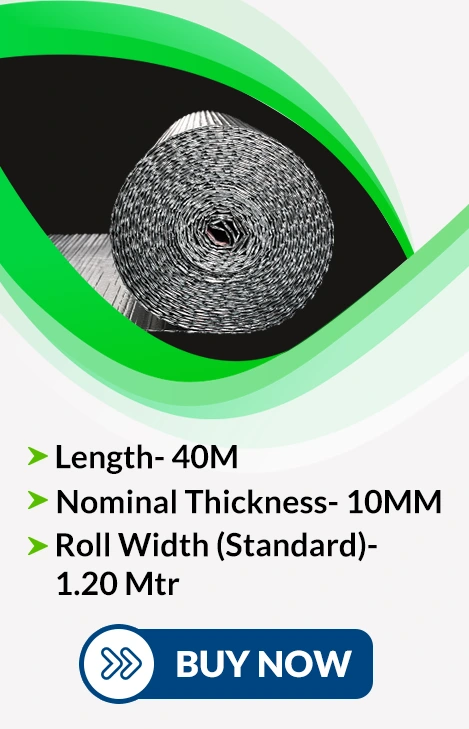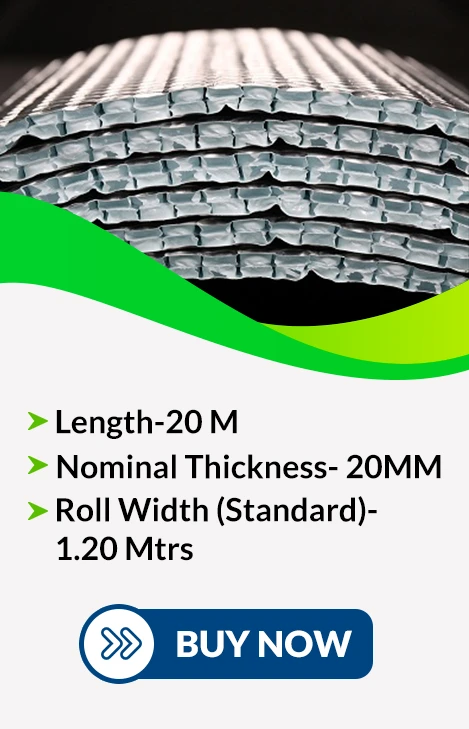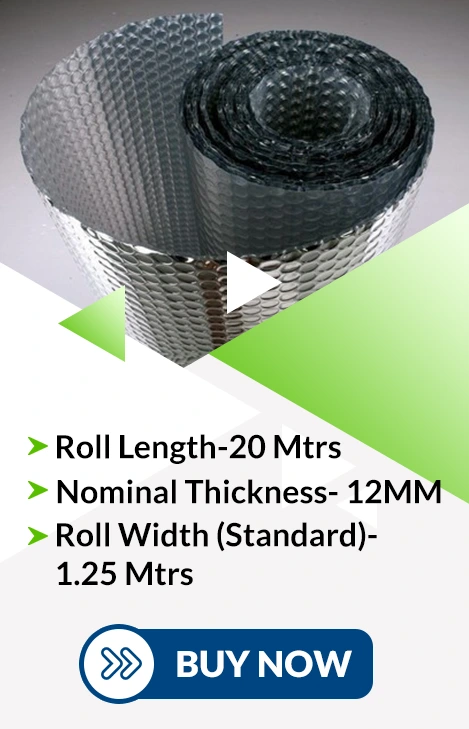Roof Insulation Panels – Comprehensive Guide in 2024
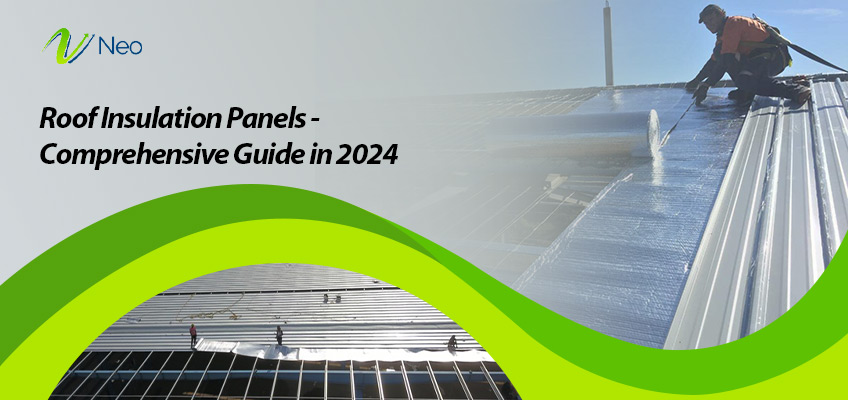
In the realm of energy-efficient architecture, Roof Insulation Panels stand as key players, revolutionizing global construction practices. Roof insulation insutry is all set to grow from a valution of Rs. 96000 Crores in 2023 to 1.5 lakh crores by 2032. As of 2024, roof insulation panel evolution around the world and particularly in India is marked by a significant surge. Statistics reveal a substantial increase in the adoption of Roof Insulation Panels, emphasizing the growing awareness of their benefits. Now, let’s delve into an in-depth exploration of these panels and their myriad applications.
Roof is the part of any premises or building that causes the maximum heat loss. In such a landscape, insulating the roof with help of roof insulation panels emerges as the best solution to prevent the heat loss, reflect the sunrays in summer, along with locking the heat inside the premises during the winters.
What is Roof Insulation Panel?
Roof Insulation Panels have emerged as an indispensable component in construction practices, offering a cost efficient and sustainable solution to regulate indoor temperatures and enhance energy efficiency. These panels serve as a protective barrier against external elements, minimizing heat transfer and creating a more comfortable living or working environment.
Essentially, Roof Insulation Panels are specialized materials designed to insulate the roof space of buildings. They come in various types, each tailored to meet specific requirements and climate conditions. Metal roof insulation panels, conservatory roof insulation panels, and polyurethane (PU) panels are just a few examples of the diverse range available.
The primary purpose of these panels is to prevent the escape of heat during colder seasons and inhibit the entry of heat during warmer periods. By doing so, Roof Insulation Panels contribute significantly to reducing energy consumption and subsequently lowering utility costs. Additionally, they play a pivotal role in minimizing carbon footprints, aligning with global efforts towards sustainable and eco-friendly construction practices.
Investing in Roof Insulation Panels is a strategic decision that not only enhances the thermal performance of a building but also contributes to long-term cost savings and environmental conservation. As these panels continue to evolve with advancements in technology and materials, their adoption is becoming increasingly prevalent in both residential and commercial construction projects worldwide. In essence, Roof Insulation Panels represent a forward-thinking approach to creating sustainable, energy-efficient spaces for the present and the future.
Types of Roof Insulation Panels
1. Metal Roof Insulation Panels
Metal roof insulation panels are engineered to provide thermal protection and structural support for buildings with metal roofing systems. These panels often consist of a layer of insulation sandwiched between two metal sheets. Known for their durability and weather resistance, metal roof insulation sheet offer effective insulation while also serving as a protective shield against harsh environmental elements.
2. Conservatory Roof Insulation Panels
Designed specifically for conservatories, these insulation panels cater to the unique requirements of these sunlit spaces. Conservatory roof insulation panels help regulate temperature extremes, preventing overheating in the summer and heat loss in the winter. They offer a balance between natural light and temperature control, ensuring a comfortable environment for year-round use.
3. Polyurethane (PU) Panels
Polyurethane panels are recognized for their exceptional insulating properties and versatility. These panels consist of a rigid foam core, providing high thermal resistance. PU panels are commonly used in various applications due to their lightweight nature and ease of installation. They offer an efficient solution for achieving optimal insulation levels in diverse construction scenarios.
4. Expanded Polystyrene (EPS) Panels
Expanded Polystyrene panels are lightweight and cost-effective insulation solutions. Comprising expanded beads of polystyrene, these panels are renowned for their insulation capabilities. EPS panels are widely used in both residential and commercial construction, offering an affordable option without compromising on thermal efficiency.
Schedule Your Roof Insulation Panels Installation Today.
5. Extruded Polystyrene (XPS) Panels
Extruded Polystyrene panels are rigid insulation popular for their moisture resistance and high compressive strength. XPS panels are commonly used in roofing applications, providing a durable and effective thermal barrier. Their closed-cell structure makes them an excellent choice for areas prone to moisture exposure.
6. Fiberglass Panels
Fiberglass panels consist of fine glass fibers, providing excellent thermal resistance. These panels are lightweight, non-combustible, and easy to install. Fiberglass insulation is commonly used in both residential and commercial roofing applications, offering a cost-effective solution for thermal performance.
7. Mineral Wool Panels
Mineral wool panels, made from rock or slag fibers, offer fire resistance and sound absorption in addition to thermal insulation. These panels are versatile and suitable for various roofing applications. Mineral wool insulation is preferred for its durability and ability to withstand high temperatures.
8. Phenolic Foam Panels
Phenolic foam panels are recognized for their high thermal efficiency and fire resistance. Comprising phenolic resin and a blowing agent, these panels offer excellent insulation with minimal thickness. Phenolic foam is often chosen for its superior performance in demanding environments.
9. Reflective Foil Insulation Panels
Reflective foil insulation panels consist of a reflective surface that reflects radiant heat. These panels are commonly used in attics and roofs to minimize heat gain. Reflective foil panels are effective in reducing energy consumption by reflecting sunlight away from the building.
10. Spray Foam Insulation Panels
Spray foam insulation panels provide a seamless and airtight insulation solution. The foam expands upon application, filling gaps and creating a continuous thermal barrier. Spray foam insulation is known for its versatility and ability to conform to irregular surfaces, ensuring comprehensive coverage.
11. Vacuum Insulation Panels (VIPs)
Vacuum insulation panels consist of a core material enclosed in a vacuum-sealed panel. VIPs offer exceptionally low thermal conductivity, making them highly efficient in providing insulation with minimal thickness. Although relatively expensive, VIPs are valued for their space-saving properties and superior insulation performance.
12. Wood Fiber Insulation Panels
Wood fiber insulation panels are environmentally friendly options made from recycled or sustainable wood fibers. These panels offer good thermal insulation and moisture-regulating properties. Wood fiber insulation is commonly used in eco-friendly construction projects, contributing to sustainable building practices.
Upgrade Your Living Space – Invest in Roof Insulation Panels Today!
Benefits of Roof Insulation Panels
1. Enhanced Energy Efficiency
Roof insulation panels act as a formidable barrier, preventing heat transfer between the interior and exterior of a building. This results in reduced reliance on heating and cooling systems, leading to significant energy savings.
2. Reduced Utility Costs
By maintaining a stable indoor temperature, these panels help minimize the need for constant adjustments to heating and cooling systems. This, in turn, translates to lower energy consumption and reduced utility bills.
3. Environmental Sustainability
Roof insulation panels contribute to environmental conservation by promoting energy efficiency. The reduction in energy consumption helps lower carbon emissions, aligning with global efforts to create sustainable and eco-friendly living spaces.
4. Year-Round Comfort
Whether it’s keeping the interior warm during winters or cool during summers, insulation panels provide a consistent and comfortable living or working environment throughout the year.
5. Moisture Control
Certain insulation panels, such as Polyurethane (PU) and Extruded Polystyrene (XPS), have inherent moisture-resistant properties. This helps prevent mold and mildew growth, ensuring a healthier indoor environment.
6. Long-Term Durability
Roof insulation panels, when properly installed, contribute to the structural integrity of a building. They provide an additional layer of protection against weather elements, extending the lifespan of the
roof and overall construction.
7. Noise Reduction
Insulation panels, such as Mineral Wool, contribute to sound absorption, reducing external noise infiltration. This is particularly beneficial in urban environments or areas with high noise levels.
8. Increased Property Value
The installation of roof insulation panels enhances the overall energy efficiency and comfort of a property. This improvement in functionality can positively impact its market value, making it an attractive feature for potential buyers or tenants.
9. Government Incentives
In many regions, governments offer incentives and rebates for incorporating energy-efficient practices, including the installation of roof insulation panels. Taking advantage of such programs can further offset initial investment costs.
10. Quick and Efficient Installation
Many types of roof insulation panels are designed for easy and efficient installation. This not only reduces labor costs but also minimizes disruption to the occupants during the installation process.
11. Versatility in Design
Roof insulation panels come in various materials and forms, allowing for flexibility in design and construction. This versatility enables architects and builders to tailor insulation solutions to meet specific project requirements.
12. Contribution to Building Codes
Meeting or exceeding energy efficiency standards and building codes is often a requirement for new constructions. Roof insulation panels facilitate compliance with these regulations, ensuring that the building meets the necessary standards for sustainability and performance.
How to Install Roof Insulation Panels?
Installing roof insulation panels is a strategic and essential process that, when done correctly, can significantly enhance a building’s energy efficiency and overall comfort. Here is a step-by-step guide to ensure a proper installation:/
1. Assess the Roof Structure
Before beginning the installation, assess the existing roof structure. Ensure that it is in good condition and capable of supporting the additional weight of the insulation panels. Address any necessary repairs or reinforcements as needed.
2. Choose the Right Insulation Panels
Select insulation panels based on the specific needs of the project, considering factors such as climate, building design, and budget. Different types of panels offer various levels of thermal resistance and may be better suited for particular applications.
3. Measure and Cut Panels
Measure the dimensions of the roof and cut the insulation panels accordingly. Ensure precision in measurements to achieve a snug fit. Use appropriate tools, such as a straight edge and a sharp utility knife, for accurate cuts.
4. Prepare the Surface
Clean the roof surface thoroughly, removing any debris, dust, or loose materials. A clean and smooth surface will facilitate better adhesion and ensure a secure installation.
5. Apply Adhesive or Fasteners
Depending on the type of insulation panel chosen, apply adhesive to the back of the panels or use mechanical fasteners to secure them to the roof surface. Follow manufacturer guidelines for the recommended adhesive or fastening method.
6. Install Panels in Rows
Start installing the panels in rows, ensuring a tight fit without gaps. Stagger the panels to create a continuous and seamless layer of insulation. Pay attention to the manufacturer’s recommendations regarding panel orientation and installation patterns.
7. Seal Joints and Edges
Use sealant or tape to seal joints and edges between panels. This step is crucial to prevent air leakage and maintain the integrity of the insulation layer. A properly sealed installation enhances the overall effectiveness of the insulation.
8. Address Penetrations and Vents
Cut and fit insulation panels around any roof penetrations, vents, or other protrusions. Ensure that these areas are thoroughly insulated to maintain a consistent thermal barrier across the entire roof surface.
9. Consider Vapor Barriers
Depending on the climate and local building codes, consider adding a vapor barrier between the insulation and the interior space. This helps prevent moisture from infiltrating the insulation and causing issues such as mold growth.
10. Inspect and Verify
Conduct a thorough inspection of the installed insulation panels to ensure they are secure, properly sealed, and meet the specified R-value requirements. Verify that the installation adheres to local building codes and regulations.
11. Consult Professionals if Needed
If the installation process seems complex or if specific requirements need professional attention, consult with experienced contractors or insulation specialists. Their expertise can ensure a flawless and efficient installation.
By following these steps, you can ensure a successful installation of roof insulation panels, contributing to improved energy efficiency and creating a more comfortable and sustainable living or working environment.
Applications of Roof Insulation Panels
Residential Buildings:
- Attic Insulation: Keeps indoor temperatures stable and helps lower heating and cooling expenses.
- Flat Roofs: Ideal for homes with flat roofs, these panels provide thermal insulation and protect against moisture.
Commercial Buildings:
- Office Buildings: Enhances thermal comfort for employees and helps cut down on energy costs for heating and cooling.
- Retail Spaces: Ensures a consistent indoor environment for customers, reducing operating costs.
Industrial Buildings:
- Warehouses: Maintains the temperature for sensitive goods and boosts energy efficiency.
- Factories: Improves worker comfort and shields machinery from extreme temperatures.
Agricultural Structures:
- Barns and Stables: Creates a stable environment for animals and storage, lowering energy use.
- Greenhouses: Maintains the required temperature for optimal plant growth.
Recreational Facilities:
- Sports Halls and Arenas: Provides comfort for athletes and spectators while cutting heating and cooling costs.
- Swimming Pools: Manages humidity and temperature, preventing condensation problems.
Educational Institutions:
- Schools and Universities: Creates a better learning environment by maintaining comfortable temperatures and reducing energy costs.
Healthcare Facilities:
- Hospitals and Clinics: Ensures a comfortable and controlled environment, crucial for patient and staff well-being.
What is the Cost of Roof Insulation Panel?
The cost of roof insulation panels depends on a range of factors including the type of material, thickness, and the area of purchasing. The normal price of roof insulation panels in India falls anywhere between Rs. 100-300 per square foot. However, it is important to take into account that the market conditions, location of premises, and the choice of thickness can add or eliminates the numbers from your final bill. At the same time, different suppliers also charge their fee and commission according to own preferences. So, choosing the right insulation service proider is very important to get the best worth of your investment.
Neo Thermal Insulation is renown brand for providing all insulation solutions at very competitive and cost efficient pricing.
Conclusion
In the evolving landscape of modern construction, Roof Insulation Panels have emerged as integral players, reshaping the way we approach energy efficiency and thermal regulation. This comprehensive guide has explored an array of insulation panel types, each designed to address specific needs and climates. From metal and conservatory panels to innovative solutions like vacuum insulation panels and reflective foil, the choices are diverse, reflecting a commitment to adaptability in construction practices.
The benefits of incorporating these panels into roofing structures extend far beyond the financial realm, encompassing environmental sustainability, year-round comfort, and increased property value. As we navigate the complexities of climate change and heightened energy consciousness, the role of roof insulation panels becomes increasingly vital, fostering a more responsible and resilient built environment.
Frequently Asked Questions (FAQs)
1. What is the average lifespan of roof insulation panels?
Roof insulation panels, when properly installed and maintained, typically have a lifespan ranging from 20 to 30 years. The longevity may vary based on factors such as material quality, climate conditions, and installation methods.
2. What types of materials are commonly used in roof insulation panels?
Roof insulation panels utilize diverse materials such as polyurethane, expanded and extruded polystyrene, fiberglass, mineral wool, and reflective foil. Each material offers unique properties catering to specific insulation needs and environmental considerations.
3. How do roof insulation panels contribute to energy efficiency?
Roof insulation panels contribute to energy efficiency by minimizing the need for continuous heating or cooling adjustments. This results in reduced energy consumption, lower utility costs, and a smaller carbon footprint.
4. What factors should I consider when choosing roof insulation panels?
Factors to consider include climate, budget, insulation needs, and material properties. Assessing the R-value, installation requirements, and environmental impact will guide the selection process.
5. How is the R-value important in roof insulation panels?
The R-value measures a material’s thermal resistance. A higher R-value indicates better insulation. Understanding the R-value is crucial when choosing roof insulation panels to ensure they meet the desired thermal performance.
6. Are roof insulation panels suitable for both residential and commercial buildings?
Roof insulation panels are suitable for both residential and commercial buildings. Their versatility and diverse material options make them adaptable to various construction needs and designs.
7. Do roof insulation panels provide any additional benefits besides energy efficiency?
Beyond energy efficiency, roof insulation panels provide benefits such as improved indoor comfort, reduced noise infiltration, and moisture control. They can also enhance property value and contribute to compliance with energy-efficient building standards.
